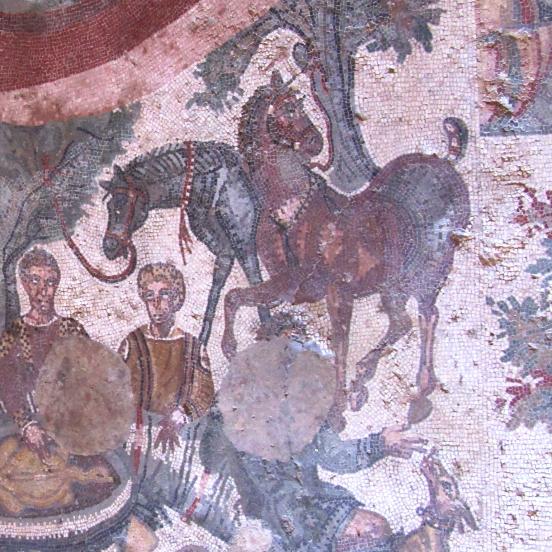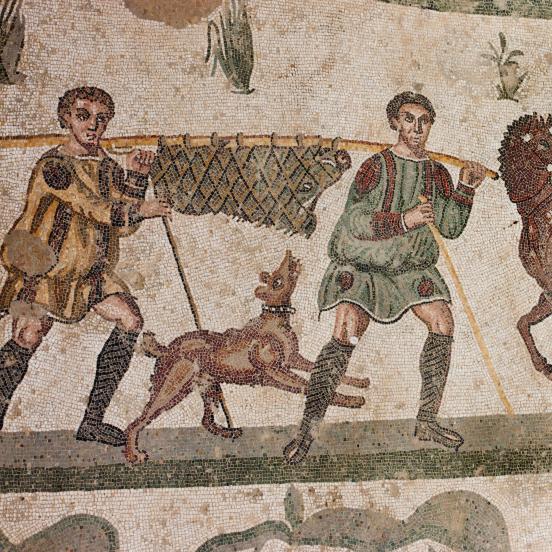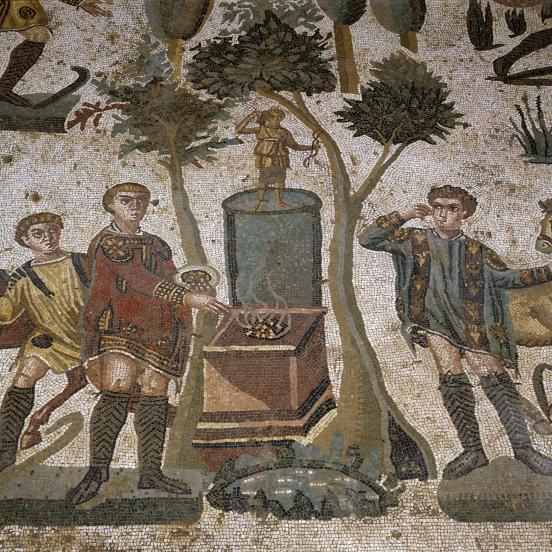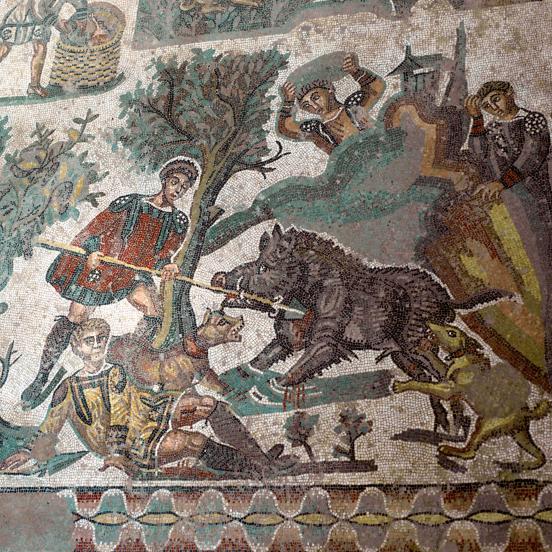Mosaics of the Villa del Casale, Piazza Armerina
The best known Roman villa of late Antiquity, Villa del Casale was built 5 kilometres from Piazza Armerina in the southern part of central Sicily during the first tetrarchy (293-305) or at the time of the next generation. The building was decorated with opulent wall paintings and mosaic floors of some 3,500 square metres in line with the requirements of the owner of the villa, a high-ranking, wealthy Roman aristocrat. The mosaics include representations of classical mythological stories, games held in amphitheatres and circuses, as well as athletic contests. However, from the aspect of the Seuso treasure two mosaics, the Great Hunt and the Little Hunt, may especially be important given that several details show great similarity to the scenes of those in the middle and on the rim of the Seuso platter. In a 200-Roman-feet (approx. 60 metres) long corridor the Great Hunt shows the capture of wild and exotic beasts, which later as animal fights entertained the spectators in arenas. The Little Hunt depicts the Roman aristocracy’s favourite type of entertainment, the events associated with a private hunt: besides capturing wild boar and deer, an open-air feast held in a forest can be seen in the centre of the mosaic, similarly to the scene in the centre of the Seuso platter.




